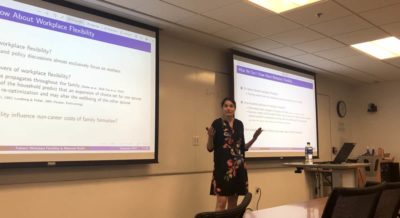In North Carolina, 64,000 public school students in pre-K through third grade were considered “chronically absent” during the 2015-16 school year — the most recent statewide data available. Research suggests that consistent school attendance in the early grades, where children are learning to read, improves student outcomes and is an early predictor of academic achievement. Reading on grade-level by the end of third grade can forecast a student’s later academic and career success.
As early as prekindergarten, children who are chronically absent — defined in North Carolina as missing 10% of the academic year for any reason — are less likely to read proficiently by the end of third grade, more likely to be retained, and less likely to develop the social and academic skills needed to persist in school.
Let’s drill down into the definition of chronic absenteeism for additional clarity. According to statute, schools must be in session for 185 or 1,025 instructional hours. Chronically absent students miss 10% or more of the school year; therefore, those students are missing 19 or more days of school per year — 114 hours or more of instruction!
At the recent NC Chamber of Commerce Education and Workforce Conference, business leaders discussed their current reality — a shortage of workers with the technical and social-emotional skills needed to be successful in today’s work environment. Regular school attendance today is a significant contributor to ensuring our students are well prepared to enter the workforce tomorrow.
While the reasons for chronic absences — such as health problems, food insecurity, bullying, lack of transportation, and missing the bus — are complex and may vary, there are actions a school, community, and school district can take to ensure more children attend school every day.
Schools and school districts in North Carolina and around the country have reduced chronic absenteeism by focusing on recognizing students for good and improved attendance, engaging students and families in school, monitoring attendance data and practice, providing personalized early outreach as needed, and developing systemic responses to attendance barriers.
In the North Carolina elementary schools that are spearheading action to reduce chronic absenteeism, we see signs of progress. These bright spots across our state can lead the way by sharing their successes and “lessons learned” in tackling chronic absenteeism. The North Carolina Early Childhood Foundation, in celebration of National Attendance Awareness Month this September, has created an AttendaNCe Counts Toolkit and companion report that includes case studies of elementary schools that are leading the way on attendance.
Schools in Edgecombe, Johnston, New Hanover, Sampson, and Wilkes counties are featured in the report. As Kimberlee Stone, principal of C.C. Wright Elementary School in Wilkes County, said, “Being present at school is the only way you can be successful at school. If I want my students to be successful, they have to be here.”
As the 2019 A. Craig Phillips Superintendent of the Year, I am not only working on attendance in my school district, but also challenging all North Carolina superintendents to take action on chronic absenteeism. In the past month, 60 of the 115 superintendents in North Carolina have signed an Attendance Awareness Month proclamation, committing to focus on “reducing chronic absenteeism to give all children an equitable opportunity to learn, grow and thrive academically, emotionally and socially.”
Editor’s note: Patrick Miller serves on EducationNC’s board of directors.




